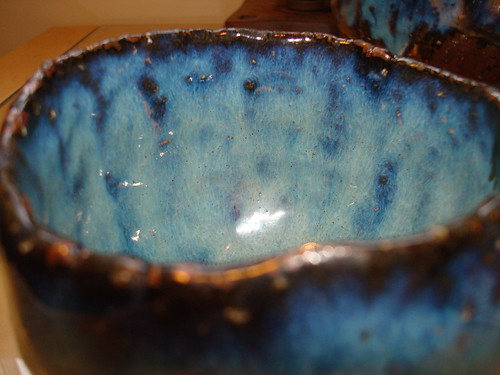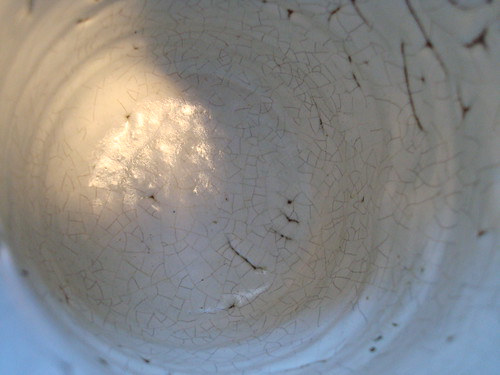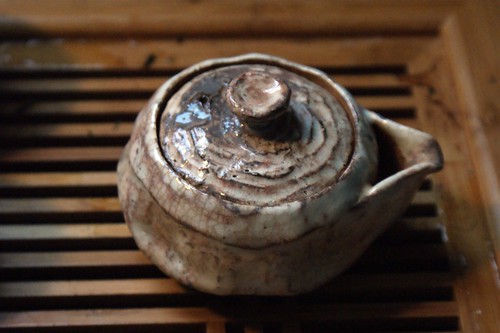One thing I will say the lighter the color of the glaze the more quickly it seems to show signs of use, and Seigan Blues are notoriously stain resistant. Case and point, the piece pictured below has been used likely over 50 times, and is probably getting rather close to 100 uses, although it hardly looks different than when it first arrived.
Whereas within far fewer uses, one of my quickest staining pieces inside looked like this.
Which now the inside is much more evenly stained, and the outside nearly matches although is slightly lighter.
Though the type of piece also seems to alter how staining occurs, it seems most Kyusu's and Hohin, are made in such a way that staining progresses much slower, although sometimes things happen in rather curious ways. Such as seen in this picture.
The staining starting occur in certain areas of this hohin are rather amazing, as it is started above most water levels, and the opposite side of the spout. My only guess is, as I tend to treat hohins more like Chinese teapots, often filling them rather close to the rim, that the exposed clay rim in that area on the back of the piece is slightly more porous, and has absorbed water and tea and, tried to expel it through the glaze on the outside causing those stains.
While I have a decent feel as to how quickly the inside of a piece can start to stain, usually dependent on the type of glaze, color of glaze, and thickness of glaze. The outside is a major toss up, seemingly more reliant on the how the piece was made. I do not know a lot about what goes into firing temperatures and how it alters the clay body, nor do I know if a two seemingly identical pieces can be radically different due to its production. Such as for some of the artists who read this, could a clay body possibly be made more dense, by squeezing harder in a pinch-work or thrown piece?




No comments:
Post a Comment